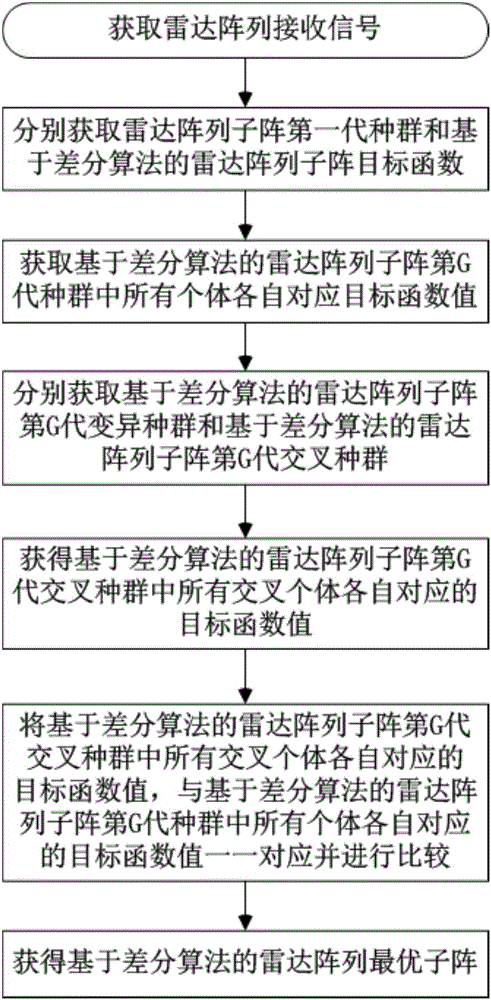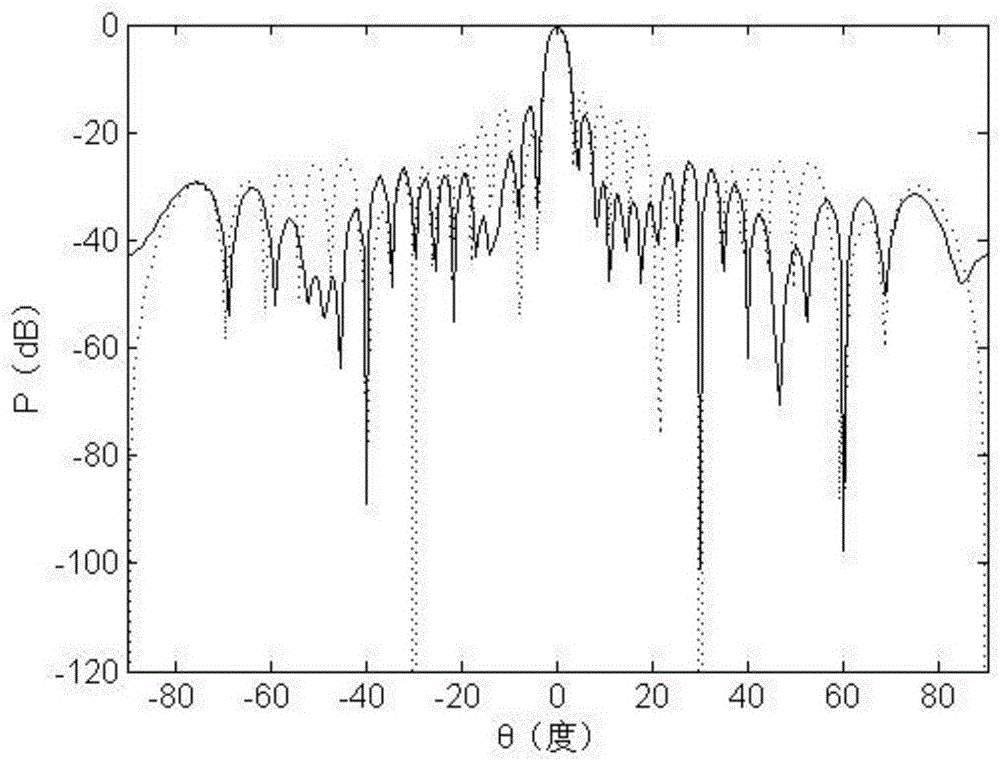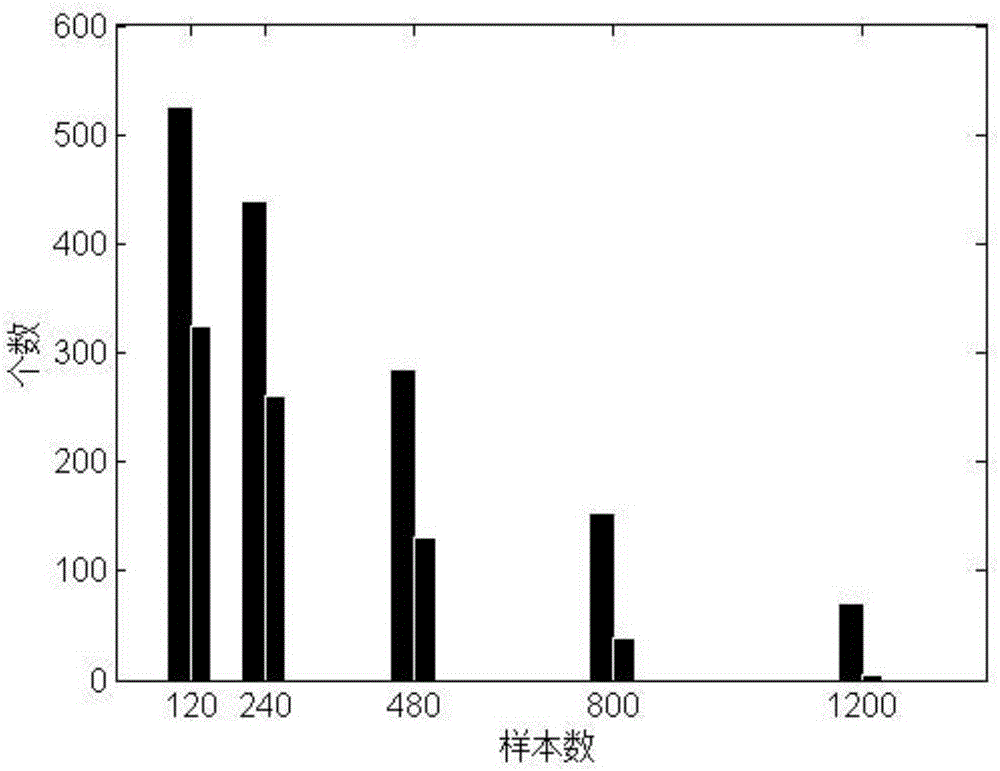Radar sub-array dividing optimization method based on difference algorithm
A differential algorithm and optimization method technology, applied in the field of radar, can solve the problem of reducing sub-array-level pattern sidelobes, etc., and achieve the effect of easy solution and implementation, and simple principle
- Summary
- Abstract
- Description
- Claims
- Application Information
AI Technical Summary
Problems solved by technology
Method used
Image
Examples
Embodiment Construction
[0024] refer to figure 1 , is a flow chart of a radar sub-array division optimization method based on a differential algorithm of the present invention, and the radar sub-array division optimization method based on a differential algorithm comprises the following steps:
[0025] Step 1, get the radar array receiving signal D N×L , and according to the radar array received signal D N×L, the covariance matrix R of the radar array received signal and the steering vector S of the radar array received signal beam are calculated; where, N is the number of radar array elements, and L is the number of sampling units contained in the radar array received signal.
[0026] Specifically, first determine that the radar array is a uniform linear array, and obtain the received signal D of the radar array N×L ; The number of radar array elements is N, and the number of sampling units contained in the received signal of the radar array is L; then the radar array is placed at a distance of λ / ...
PUM
 Login to View More
Login to View More Abstract
Description
Claims
Application Information
 Login to View More
Login to View More - R&D
- Intellectual Property
- Life Sciences
- Materials
- Tech Scout
- Unparalleled Data Quality
- Higher Quality Content
- 60% Fewer Hallucinations
Browse by: Latest US Patents, China's latest patents, Technical Efficacy Thesaurus, Application Domain, Technology Topic, Popular Technical Reports.
© 2025 PatSnap. All rights reserved.Legal|Privacy policy|Modern Slavery Act Transparency Statement|Sitemap|About US| Contact US: help@patsnap.com



